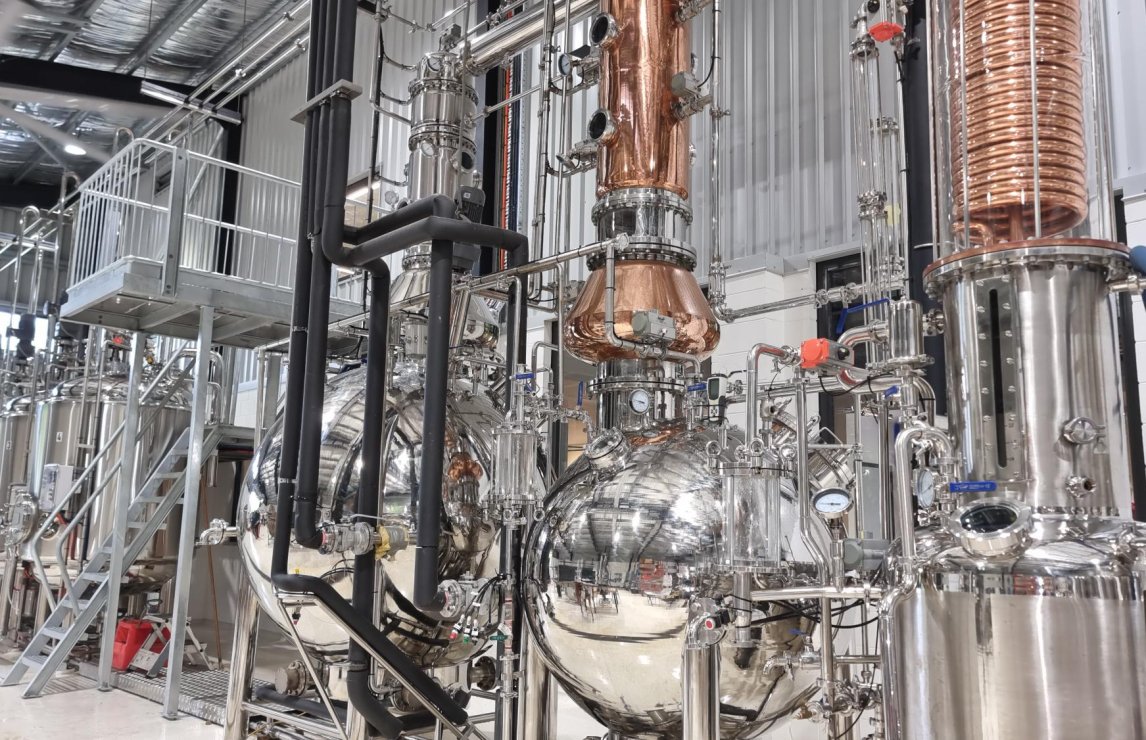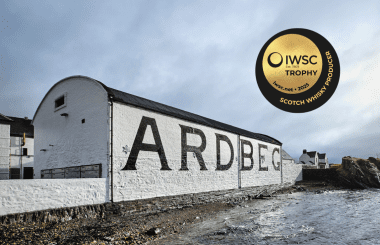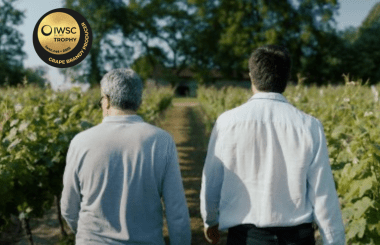The Future of Spirits? How Bingil Bay Distillery’s SUB-ATMOSPHERIC™ vacuum rums secured golds – by perfecting a sustainable twist.
“It can be easier to be taken seriously when you do something big” Paul Williams tells me, sitting in front of his stills at the Bingil Bay Distillery.
And what he and partner Lynda are doing is just that.
Their distillery isn’t a story about world domination nor talk about millions of bottles sold. It’s not even about the validation by not one, but two IWSC gold medals.It’s far gentler, yet with equally sizeable opportunities and if adopted by others has significant ramifications. Their bespoke SUB-ATMOSPHERIC™system disrupts the status quo and proposes a different vision for how craft distillers can operate.
So much so, that it’s hard to argue that their distilling operation isn’t just more sustainable than anywhere else in the world – it might well be the most. But that’s not a claim that’s being made during our conversation and while there’s something of the maverick in Paul, there’s also a humility and a practical approach to proving his concept has merit.
The distillery has been a long time coming too – both for the owners and the industry. Paul and Lynda’s journey into the world of craft distilling started like so many – from the peripheral interest as a former winemaker in the 1970’s, to a more serious look at other operations during sailing expeditions around Guadeloupe, Grenada, Cuba, and the Caribbean alongside early experiments of their own.
Bingil Bay became a reality in 2016 when they embarked on building a distillery for themselves.
What strikes me is how inevitable it seems for a man with such a process focussed mindset and a career spent pushing frontiers (Paul’s invention in biomass distillation is called Close Coupled Gasification,which has become industry standard and now worth millions) – that taking on distilling spirits would also invariably involve trying to move the technological dial forward.
“Looking around at the historic producers, we were surprised to see how little had changed in hundreds of years” Paul said.“That’s the beauty of the traditional rum makers, they have a wonderful heritage, but we could also see a gap.”
This opportunity manifests in a few ways.Someare scientific, all are driven with the idea of treading lightly. Lynda talks passionately about their Queensland home “We’re in a unique spot in terms of having the Great Barrier Reef on one side and pristine World Heritage rainforest on the other. So, sustainability and sugar cane were paramount to us from inception.”
They have a direct line to their molasses source, “milled at Tully just a few kilometres away, which is rated as one of the best in the world” according to Paul. Not only does it reduce carbon miles, but it also allows them to reconnect a link that over time hasbecome either obsolete or impossible for many of the long-standing rum producers given the closure of so many sugar mills in the Caribbean.That of a refiner and distiller working in sync to make products that speak of a place and a circular economy that is predominantly driven hyper-locally.
At this point in our conversation, the emphasis shifts from reaffirming old rum associations to forging new ones. It’s also where it gets complex, quickly.
Bingil Bay’s stills don’t operate in a conventional way. While there is a whiff of the familiar in the look of certain components – the giant 2000L stainless steel sphere that acts as their pot (and looks somewhere between a submarine and giant metallic globe) indicates just how different they are.
The surreal shape isn’t for aesthetics – it’s because the entire system is under highvacuum and needs to handle immense forces. And because the process operates at sub atmospheric pressure, it allows them to distil without ever needing to use temperatures that exceed 50 degrees centigrade.
By halving the temperature, along with their proprietary energy conservation systems, they not only use less energy (running on justa quarter of the typical requirements), they also reduce the conditioning and quantity of cooling water.Most significantly they eliminate the need for polluting boilers as well.
In real terms, that means that the two biggest cost centres, power and water (alongside all the environmental demands they bring) are not being mitigated here, they’ve practically been eliminated.
“Solar energy provides the small amount of process energy we need. We are energy net positive and sell our excess energy back to the power grid. We even generate excessive amounts when the stills are in full flow because the heat recovery from allcomponents, even the fermenters, isthe major contributor to power the stills.”
It will come as little surprise then, to hear that it took years to design such a custom operation. Paul recalled the glass system tests and mapping out the flows – a mad experiment of tubes, hoses, and ideas. Following a lengthy procurement mission that spanned the world, they finally settled on a manufacturer who they worked alongside, often based onsite in their factory, to build and oversee each item of custom equipment.
And while it’s easy to see the result now that it has been created, the size of the task must have been daunting. On a human level questions swirled around “not being quite sure if vacuum technology would make better or worse spirits but having to take a leap of faith.”
Meanwhile – the engineering and construction involved was intense. The key challenge beyond the obvious language barrier? How to create a pot that would not implode once the atmosphere had been pumped out. The spherically shaped unit, affectionally called Fat Boy, weighs in at 5 tons to account for it.
Beyond the atmosphere removal however, Paul’s design mirrors the typical conventions that you would expect a double retort rum operation to work like. He’s merely applied a modern slant.
Instead of having copper pots, there are copper packed columns to increase the sulphur removing contact elsewhere, and instead of two separate batch processes it operates continuously to avoid the massive heat loss of a separate strippingrun. There’s been thought and science put into how it can promote beneficial esters and congeners coming out and how it facilitates conservative heart’s cuts.
That’s not to say there isn’t loads of additional proprietary ideas elevating each section. For example, the heat recovery units installed capture a whopping 80% heat recovery and ensure each kilowatt, degree Celsius, litre passing a flow monitor and so on is monitored and maximised.
And therein lies the magic of it all. Maximum efficiency carried out in a gentle, almost peaceful process.
There are no boilers (nor their emissions), huge heating curves or aggressive cooling requirements. Liquid is literally being pulled through and separated. The ancient rainforest rainwater supply they harvest into giant 30,000l tanks is sufficient to feed their product requirements, while the power input is minimal and stems from the roof.It’s as self-regulating and sustainably forward as distilling gets.
As I wonder in awe of the stark point of difference on display, Paul reminds me thatthe opposite should be true. It’s odd that this is a unique sight.
As he put it, “Distilleries are a standout in the food and beverage industry, which as an industry mostly changed to vacuum many years ago when faced with similar processes like boiling and reduction. Why? For flavour preservation and energy reduction. No food processor could exist today without vacuum.” In the face of rising climate concerns, distillery evolution is long overdue.
And the approach is palpable too. Lower heat means different compounds and different distillates compared to conventional techniques. Speaking of the flavour profile, Lynda says that “We find it fuller overall, while the experiments with higher ester rums have shown promising results in taking over clear and bright compounds. We’ll soon be doing tests with on-siteGas Chromatography/mass spectrometry to analyse the science of it, but already, the rum is picking up awards and being enjoyed by many.”
It might be early days for them, with both liquid in cask maturing, impending distillery tour infrastructure and a nascent brand identity all in build phases – but it's without doubt one of the most advanced operations in the world when it comes to sustainable distilling.
All the others who achieve not just net zero climate results, but equally positive ones tend to be smaller or achieve it by offsetting (or dare I say it, green washing). They certainly don’t operate in batches that are thousands of litres at a time.
So, is the likes of Bingil Bay the future for the industry?
“We’ve never been daunted by a challenge” says Lynda, and while both readily state the journey ahead is exciting – they both accept that altering the current distilling norm can be challenging for many in the trade. It forces you to rethink so many baseline assumptions. But despite their unwaning confidence in having a safer and more sustainable process – they are not looking to differentiate through controversy and ‘first and only’ types of claims.
Theirs is a gentle reminder that all industries can and will evolve. Distilling has adapted to new challenges, be it in the way that sugar supplies shaped the story of rum and its famed regions over the years, and now, to the story of climate change and how it is shifting the need to embrace new approaches.
Lynda is hopeful of what it means and where they are placed when it does. “We believe the industry must move to more sustainable production. Consumers are actively seeking out more environmentally sustainable products so it’s only a matter of time. Vacuum distillation not only produces cleaner and crisper spirits, remarkably, it is also greener, safer, cheaper, and simpler than traditional distillation.”
If the business case is clear, as always when it comes to spirits “the proof is in the pudding” says Paul. And in this case, that’s a glass of rum with sweet sugarcane notes, ripe orchard fruit and a lingering complexity. Quite delicious.
Paul Williams & Lynda Hannah, of Bingil Bay Distillery, will attend our Awards Ceremony on 12 November, with a dedicated space at our Gold/Trophy tasting. Be sure to say hello, and taste their two gold-medal winning rums, if you're attending.



